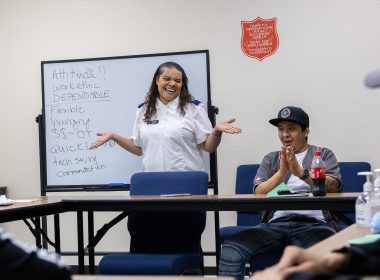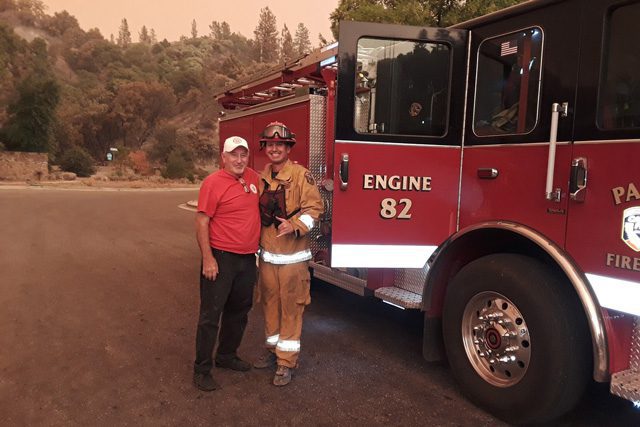Spirited women officers played a vital part in beginning Salvation Army work in this country. Staying on for long and illustrious careers, they left footprints for thousands to follow. Two stand out as examples of courage and dedication.
ELIZA SHIRLEY
The first successful work in the United States rested on the shoulders of a 17-year-old girl.
In the spring of 1879, the newly named Salvation Army in London was so small that all the workers knew each other personally. Eliza Shirley, then 16, joined the Christian Mission and was appointed an evangelist at one of the “stations.” At first her parents, Amos and Annie Shirley, were not sure they approved. Shortly thereafter, Amos, an experienced silk weaver, left for America, and readily found a position in Philadelphia.
When he sent for his wife and daughter, Eliza did not want to leave the Army behind. Her father’s description of the ungodliness he found there convinced her that the Army was needed. She called on General Superintendent William Booth and asked permission to start the work in America. By then she had been commissioned a lieutenant and was doing well in her home corps, Coventry. Booth was not sure the country was ready for opening, and reminded her that leaving the Army would be a breach of her pledge. However, he softened enough to say that if she were unable to resist, she could go with his blessing. Further, if she were successful he would give her work official recognition. Captain Elijah Cadman, her superior officer, presented 100 penny song books to take with her.
By the time they reached Philadelphia, her mother shared her desire to begin Army work. They walked the streets looking for an affordable meeting place, finally settling on an abandoned chair factory. The family worked together to clean it up and get it ready for the opening meeting. Posters announced the appearance of “Two Hallelujah Females.” Though they had no standard uniform, no drums, none of the glitter which later served to attract a crowd, people flocked out of curiosity to their open air meetings, until the police told them they couldn’t gather on the street any more. They found a vacant lot several blocks away, but afterwards no one followed their march to the hall.
Providence arrived in the form of a tar barrel fire set by some boys on their lot. When the Shirleys saw the lot at last filled with people watching the firemen, they proceeded with a meeting. Their trophy was Reddy, the worst drunk in the area. When the people saw Reddy march to the hall, they followed to see what they would do with him. News of Reddy’s conversion reached not only the local papers, but up and down the coast, and a friend sent Booth a copy of the paper.
Shortly after this the Shirleys opened up another hall in West Philadelphia. When Amos’s employer told him he had to choose between his job and the Army, he chose the Army.
The reply of General Booth to the news of American success was the promotion of the Shirleys to Captain and the promise to send George Scott Railton to the country to take charge.
Amos was drowned in 1884, but Annie and Eliza continued in the work. Eliza returned from a rest trip to England with a new husband, Captain Philip Symmonds, had four children, and lived well into her eighties. Retiring in Chicago, she became an ardent fan of the Chicago Cubs. As Eliza was on her deathbed, the Cubs were in the final games of the World Series. She drifted in and out of consciousness, alternately praying and asking how the Cubs were doing. When word came that Eliza Symmonds had been promoted to Glory, there was a moment of silence in the stadium in honor of this gallant lady.
EMMA WESTBROOK
Lieutenant Emma Westbrook had been working with the Booths for 10 years, and also helping out in the household.
When she received her appointment to America, and orders to send in her measurement for a uniform, she was puzzled: Why did she need a uniform, and just where was America?
Upon their arrival in New York, she set to work with her customary dynamic efficiency. When Railton moved headquarters to Philadelphia, she remained behind at New York No. 1 Corps, assisted by another of the lassies. She served at several corps until 1884, when she went with Major Thomas Moore when he formed his own American Army. In 1889, along with others, including Colonel Ernest Holz, she rejoined Booth’s Army, and Moore’s Army faded away. She, as was usual for officers, made two or three moves a year in the Northeast, being promoted through the ranks until reaching Commandant in 1917. In 1920 she retired from active service.
Emma was an honored guest on March 10, 1930, as a great Hallellujah meeting was held at the exact spot in Battery Park where the first meeting was held. As she beheld the thousands of cheering Salvationists, she was heard to say, “What hath God wrought?” At the Golden Jubilee National Congress held in June of that year, she rode triumphally in an open car with Commander Evangeline Booth and retired Commandant Eliza Shirley.
Field Major Westbrook was promoted to Glory in January 1933.
Photos Courtesy Western Territorial Museum









